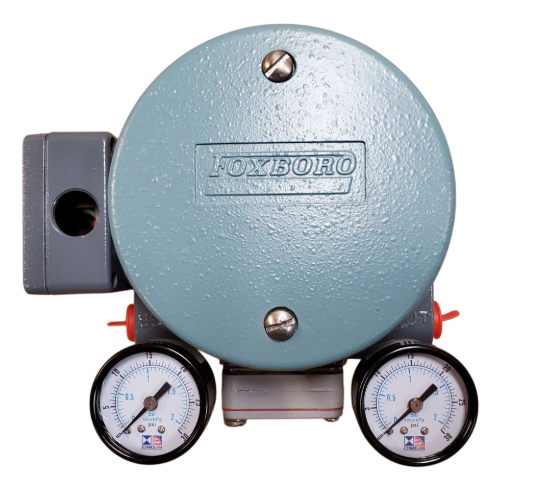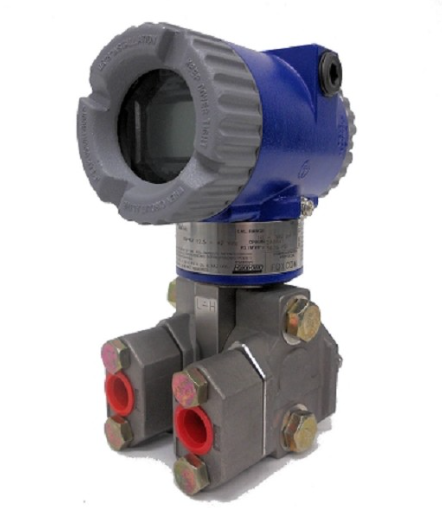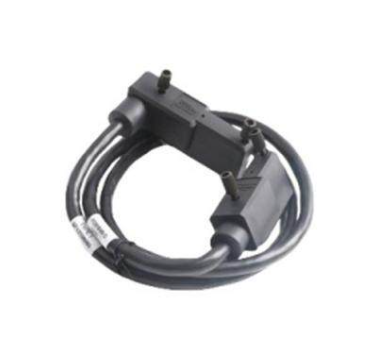Gas "natural gas power generation ② : Is natural gas enough? What is the solution to high gas prices?
To discuss the lack of natural gas resources, we can't get around two words - "gas shortage". In the winter heating season of 2017, there was a shortage of natural gas supply in some parts of northern China, affecting the heating of some residents, causing widespread attention from social public opinion, and so far, I have been afraid. Will the "gas shortage" return? Is there enough natural gas to support the development of gas and electricity?
Is the gas enough?
In fact, the "gas shortage" at the end of 2017 is not a real shortage of resources. Thepaper.cn (www.thepaper.cn) At that time visited Hebei Province, which had the greatest pressure of natural gas supply guarantee, and found that the most direct reason for the unexpected gap in natural gas supply in the province was that the strong promotion of coal to gas exceeded expectations, coupled with the concentrated release of gas demand after the arrival of the heating season, which seriously exceeded the original design of the winter supply guarantee plan. In addition to the increase in terminal natural gas consumption, a series of unexpected occurrences, including the reduction of gas transmission from upstream Central Asia pipelines and the failure of Tianjin LNG terminal to put into operation as scheduled, also put pressure on natural gas supply.
Zhu Xingshan, deputy chief economist of the Planning Department of China National Petroleum Group and Secretary-General of the Special Committee of Petroleum Economy of China Petroleum Society, has relieved doubts on many occasions about whether gas is enough and the dependence of natural gas on foreign countries continues to rise.
According to the forecast of the China Petroleum Exploration Institute, if the development of deep-water natural gas and natural gas hydrate is not taken into account, domestic natural gas production will reach 210 billion to 245 billion square meters in 2025, and can reach 330 billion to 410 billion square meters in 2050, and domestic natural gas can meet the "bottom line demand" including people's livelihood, public service and key industrial gas for a long time.

As the largest oil and gas importer, China's foreign dependence on natural gas climbed to 43% in 2020. According to the research of China Petroleum Research Institute of Economics and Technology, before 2040, China's natural gas dependence on foreign countries increased year by year, reaching a peak of about 53% in 2040, and then began to decline. If the underground coal gasification, deep sea gas and gas hydrate breakthroughs, China's natural gas dependence on foreign countries is expected to further reduce.
Zhu Xingshan believes that as long as proper measures are taken, the risk of supply security is controllable. From the global point of view, natural gas resources are sufficient, the global proven reserves of natural gas is 197 trillion cubic meters, according to the current production can be exploited for more than 50 years, the estimated recoverable resources is 783 to 900 trillion cubic meters, can be exploited for more than 200 years. From the perspective of consumption, developed countries have basically reached the peak of natural gas consumption, and the increase in global demand mainly comes from developing countries such as China and India. China is the country with the largest increase in future gas demand, "it can be said that most of the world's exported natural gas resources are prepared for China." From this point of view, China's utilization of international natural gas resources favorable conditions, medium - and long-term supply security risks are controllable.
"The key is domestic security." Zhu Xingshan suggested that domestic natural gas production to maintain the bottom line demand, production capacity is much greater than production, if a certain import channel supply interruption, domestic production can quickly top, when the import gas is cheap, domestic production down; Continue to improve the diversification of import deployment, but not rely on a single import channel, reduce import risks; Establish an emergency support mechanism.
"Importing natural gas is not scary, but not prepared." 'he said.
This is not one person's opinion.
Luo Zuo County, director of the Research Office of the Sinopec Economic and Technological Research Institute, who has been engaged in energy economics and strategy research for a long time, wrote that China is the main driver of the increase in natural gas demand in the future for a long time, and more than one-third of the increase in global natural gas demand will come from China by the middle of this century, and China has the right to demand. At present and in the future, the situation of oversupply of natural gas will always exist, and international sellers generally have the desire to strengthen natural gas trade with China, which is generally good for China's use of natural gas. "In the buyer's market has existed for a long time, the natural gas power generation industry should evaluate the situation and moderately accelerate development."
The supply is sufficient, and more importantly, how can the gas price, the "life gate" of the natural gas power generation industry, fall to a reasonable level?
Can gas be cheaper?
The three major sources of domestic natural gas supply are domestic gas, imported liquefied natural gas (LNG) and imported pipeline gas. In comparison, the import of LNG has the greatest flexibility. Natural gas as a gas fuel is usually supplied by the local city fuel company or direct supply by China National Petroleum, such as Guangdong, a major consumer of imported LNG, gas power plants are mainly supplied by imported LNG.
In the international LNG market, there is known as the "Asian premium". What this reflects is the lack of a say for Asian importers in the international gas pricing system. In 2018, the annual average spot price of Henry Port in the United States was $3.16 /MMBtu (million British thermal units), the average annual price of NBP in the United Kingdom was $8.05 /MMBtu, the average price of LNG imports in Northeast Asia was $9.41 /MMBtu, and the price ratio of the three places in the United States, Europe and Asia was 1:2.5:3.
Liu Manping, a researcher at the Price Monitoring Center of the National Development and Reform Commission, said that the Asian premium appeared, a large part of the reason is the rapid growth of natural gas consumption demand in China, Japan and South Korea, only China produces natural gas in the three countries, but the domestic production growth cannot keep up with the growth of consumption, external dependence continues to rise, and Japan and South Korea are completely dependent on imports.

With the growth of global LNG exporters and exports, the above pattern has loosened, and the Asian premium for natural gas is expected to shrink or even stay flat.
Zhu Xingshan gave the forecast data: During the "14th Five-Year Plan" period, the comprehensive import cost of domestic LNG is 6-7 US dollars /MMBtu, compared with 9-10 US dollars /MMBtu during the "13th Five-Year Plan" period, a significant drop of 30%-50%.
Although the price of imported gas sources has been reduced, the conversion to the final price is still not cheap.
Guo Jiaofeng, a researcher at the Institute of Resources and Environmental Policy at the Development Research Center of The State Council, told Thepaper.cn that the CIF price of imported gas at $6 to $7 per MMBtu will become a long-term trend without considering inflation. Then add the cost of unloading, gasification, pipeline transportation and other costs, and the gas price to the end user will reach about 2.5 yuan/square. That is about the same as the price at which shale gas, the most expensive domestic gas to develop, reaches the end.
In 2020, due to the impact of the COVID-19 pandemic, the collapse of international oil prices and the warm winter, the price of natural gas in the three major markets fell further, hitting a record low. From January to June last year, the average spot price of LNG in the United States HH, the Netherlands TTF and Northeast Asia was $1.81 /MMBtu, $2.48 /MMBtu and $3.72 /MMBtu, respectively, down 33.7%, 52.4% and 46.4% year-on-year.
In the face of the "pay or not" long agreement signed earlier, which costs a decade or two and has high default costs, even if the spot has fallen to the "cabbage price", it is not like to buy.
During the "Twelfth Five-Year Plan" period of high oil prices, domestic oil companies signed a number of high price long trade agreements linked to oil prices, which is still a pain point for the development of the natural gas industry. After the collapse of oil prices in 2014, the pace of signing the "three barrels of oil" long-term agreement slowed down. In 2015, when Asian LNG spot prices fell below $7 /MMBtu, Zhang Guobao, former director of the National Energy Administration, expressed concern that he did not know how the "three barrels of oil" would absorb the long-term contract price as high as $18-20 /MMBtu.
The spot price of LNG is highly flexible, mainly determined by supply and demand, and has no direct correlation with oil prices. At present, China's import of LNG is mainly based on medium - and long-term contracts. Data from the China Natural Gas Development Report (2020), written by the Department of Petroleum and Natural Gas of the National Energy Administration and other departments, show that in 2019, China imported 96.56 million tons of natural gas (equivalent to 135.2 billion cubic meters), pipeline gas imports accounted for 37.6% and LNG imports accounted for 62.4%. Among them, the proportion of spot LNG further increased, accounting for 35.4% of the total LNG imports.
As the world economy gradually emerges from the shadow of the epidemic and commodity prices soar, international oil and natural gas prices have rebounded sharply since 2021.
A senior industry insider familiar with LNG trade told the Surging news that the long association of LNG and oil prices are linked, and the advantages are apparent when the oil price is low. Under the situation of loose supply and demand in the natural gas market, today's long-term association contract terms are more flexible and pricing methods are more diversified, and domestic enterprises tend to negotiate long-term contract procurement with international resources.

According to Caijing magazine, in 2019, taking a gas-fired power plant located in the Pearl River Delta as an example, its gas price cost was about 2.52 yuan/cubic meter, which dropped to about 2.15 yuan/cubic meter in the first half of 2020, and the converted fuel cost of KWH was about 0.42 yuan/KWH. Taking into account fixed-asset investment depreciation, the fuel cost of gas-fired power plants accounts for about three-quarters of the total power generation cost, which was about 0.58 yuan/KWH in the first half of last year.
It can be seen that although the global supply and demand is loose, natural gas is enough, but even if the international gas price bottomed out, the cost of gas and electricity is still high.
What's the reason? The cost composition of gas prices continues to be dismantled, and people from Jiangsu gas power plants and a gas power plant in North China directly pointed to the surging news about the high cost of the intermediate link. "The more than 40 cents of pipe transportation fee has beaten us to the ground."
The downstream expects to reduce costs in the natural gas market reform, that is, the "X+1+X" market model: diversified gas supply subjects, full competition in the sales market, fair access to storage and transportation facilities, and the formation of a "control the middle and let go of both ends" pattern.
In the "three barrels of oil" to increase domestic natural gas exploration and development efforts at the same time, a number of downstream power plant respondents called for the increase of upstream subjects, promote the competitive transfer of mining rights, stimulate the vitality of exploration and development, and truly form competition. In midstream, the construction of infrastructure such as LNG receiving stations will be accelerated, and the surplus capacity of LNG receiving stations will be opened to third parties in a fair manner. At the same time, vigorously promote the natural gas direct supply mode for large and medium-sized gas-fired power generation projects to reduce intermediate costs.
In recent years, with some state-owned large power generation groups, regional energy enterprises, urban gas enterprises to join the LNG import and receiving station investment queue, the gas source pattern tends to be diversified and market-oriented, and the dilemma of gas power plants "can not produce gas, to produce no gas" is expected to be gradually alleviated.

The more optimistic judgment in the industry is that all the suppliers and consumers use the natural gas pipeline network and other infrastructure fairly, and carry out many-to-many market competition, which is conducive to reducing the terminal gas price. Coupled with the reduction of intermediate links by direct supply, both the degree of supply security and the price problem will be significantly improved.
"The reform of the national oil and gas system has not been fully implemented, especially the capacity of the infrastructure such as natural gas receiving stations and natural gas pipelines is still far from enough." Some gas power plant people admitted to the surging news that it is true that international natural gas resources are rich and long-term supply exceeds demand, but to truly revitalize resources, the prerequisite is that domestic hardware facilities should first. If the natural gas infrastructure is rich enough and the "meridians" of natural gas supply are not smooth, the sufficient gas source can only be water without a source and a tree without roots.
For the historical problems left over by the long association, Zhu Xingshan suggested that the price review, contract renegotiation and other ways to reduce the signed contract price and pay or not; The relevant departments of the state take the lead in studying the original long-trade contract sharing mechanism; Create conditions for enterprises to make full use of the spot, for example, increase the flexibility of oil production assessment, accelerate the construction of LNG receiving stations, and force the surplus capacity of LNG receiving stations to be fair and open to third parties. At the same time, natural gas transmission and distribution and power transmission and distribution are both network-based natural monopoly industries, with similar investment and operating risks, should refer to the permitted rate of return of the power grid to determine the permitted rate of return of the transmission and distribution network, while strengthening cost supervision and information disclosure.
In addition to the cost of "gas", is there room for the cost of "electricity" to be compressed? A common view is that the gas turbine is "controlled by others", which has also led to the long-term inability of gas and electricity to be lightly loaded. To what extent can autonomous gas turbines enhance the competitiveness of the gas and electricity industry?
- EMERSON
- Honeywell
- CTI
- Rolls-Royce
- General Electric
- Woodward
- Yaskawa
- xYCOM
- Motorola
- Siemens
- Rockwell
- ABB
- B&R
- HIMA
- Construction site
- electricity
- Automobile market
- PLC
- DCS
- Motor drivers
- VSD
- Implications
- cement
- CO2
- CEM
- methane
- Artificial intelligence
- Titanic
- Solar energy
- Hydrogen fuel cell
- Hydrogen and fuel cells
- Hydrogen and oxygen fuel cells
- tyre
- Chemical fiber
- dynamo
- corpuscle
- Pulp and paper
- printing
- fossil
- FANUC
- Food and beverage
- Life science
- Sewage treatment
- Personal care
- electricity
- boats
- infrastructure
- Automobile industry
- metallurgy
- Nuclear power generation
- Geothermal power generation
- Water and wastewater
- Infrastructure construction
- Mine hazard
- steel
- papermaking
- Natural gas industry
- Infrastructure construction
- Power and energy
- Rubber and plastic
- Renewable energy
- pharmacy
- mining
- Plastic industry
- Schneider
- Kongsberg
- NI
- Wind energy
- International petroleum
- International new energy network
- gas
- WATLOW
- ProSoft
- SEW
- wind
- ADVANCED
- Reliance
- YOKOGAWA
- TRICONEX
- FOXBORO
- METSO
- MAN
- Advantest
- ADVANCED
- ALSTOM
- Control Wave
- AB
- AMAT
- STUDER
- KONGSBERG
- MOTOROLA
- DANAHER MOTION
- Bently
- Galil
- EATON
- MOLEX
- Triconex
- DEIF
- B&W
- ZYGO
- Aerotech
- DANFOSS
- KOLLMORGEN
- Beijer
- Endress+Hauser
- MOOG
- KB
- Moxa
- Rexroth
- YAMAHA
- Johnson
- Westinghouse
- WAGO
- TOSHIBA
- TEKTRONIX


Email:wang@kongjiangauto.com



































































































































